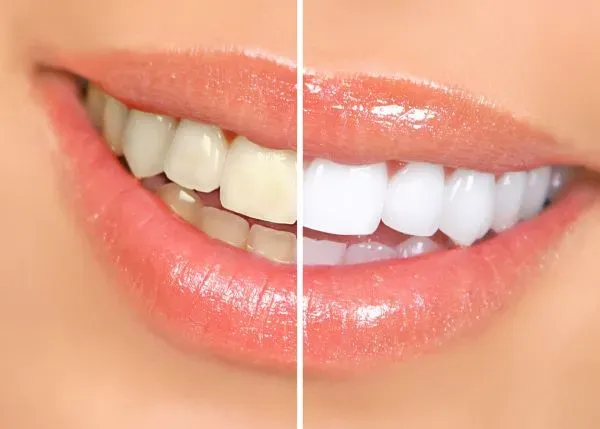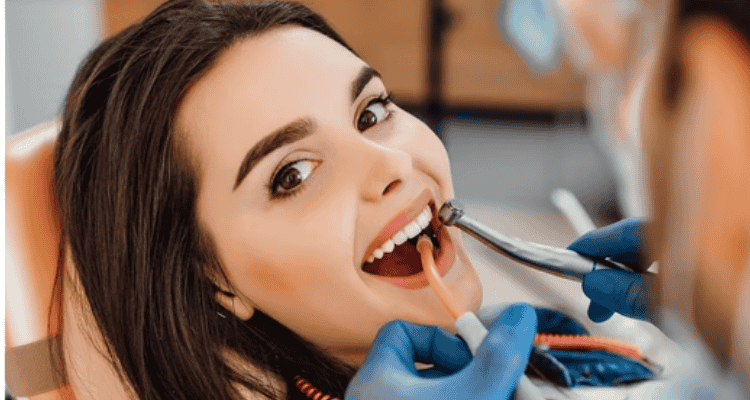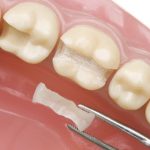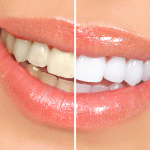A bright smile can significantly impact your confidence and how others perceive you. However, factors like coffee, tea, wine, tobacco, aging, and certain medications can lead to yellowed teeth and tooth discoloration over time. While many Brampton residents desire whiter teeth, concerns about safety often arise when considering whitening treatments. Is that dazzling smile worth potential risks to your dental health? This comprehensive guide explores the science behind tooth whitening, evaluates both professional and over-the-counter options available in Brampton, and addresses common concerns about tooth sensitivity, gum irritation, and long-term effects on your oral health. Understanding how these treatments affect your tooth enamel, dental restorations, and overall dental wellness will help you make an informed decision about brightening your smile.
Understanding How Teeth Whitening Works
The Science Behind the Brightness
Tooth whitening is primarily achieved through the use of peroxide-based compounds. The two most common active ingredients in whitening products are:
Hydrogen Peroxide: This is the primary ingredient in most in-office whitening treatments. Professional treatments typically use hydrogen peroxide gel in concentrations ranging from 15% to 38%, significantly higher than what’s available in over-the-counter products.
Carbamide Peroxide: Often found in take-home products, carbamide peroxide breaks down into hydrogen peroxide. Concentrations of carbamide peroxide typically range from 10% to 22% in professional products, which is equivalent to about 3% to 7% hydrogen peroxide.
When applied to teeth, these compounds penetrate the porous tooth surface and break down complex stain molecules into simpler ones, making the tooth appear whiter. The effectiveness depends on the concentration of hydrogen peroxide or carbamide peroxide gel, the time of exposure, and sometimes activation by heat, LED light, or blue light.
Types of Teeth Whitening
Different whitening methods address various types of discoloration:
Extrinsic Staining: These surface stains affect the outer layer of the tooth (enamel) and are typically caused by foods, beverages, and tobacco. Most whitening methods effectively address extrinsic stain.
Intrinsic Staining: These stains occur within the tooth structure itself and can result from medication (like tetracycline-stained teeth), trauma, or developmental issues like enamel hypoplasia. Intrinsic stain is more difficult to treat and may require more aggressive bleaching approaches or alternative cosmetic treatments.
Professional Teeth Whitening vs. Over-The-Counter Products
In-Office Professional Whitening
Professional teeth whitening performed in a dental office provides the most dramatic results in the shortest time.
Benefits:
- Higher concentrations of hydrogen peroxide (15-38%)
- Results visible after a single 60-90 minute appointment
- Teeth can become 5-8 shades brighter
- Dental professionals protect gums and monitor the process
- OFFICE TOOTH whitening can address both extrinsic staining and moderate intrinsic staining
A typical in-office vital bleaching procedure involves:
- Examination to ensure you’re a good candidate
- Protection of gums and soft tissues
- Application of a layer of peroxide gel to the tooth surface
- Possible use of light activation to enhance results
- Multiple applications within a single session
According to clinical studies, including research by Reis A and colleagues published in Oper Dent, professional office whitening produces the most consistent and dramatic improvements in tooth shade.

Take-Home Professional Kits
Many dental offices offer custom-made whitening trays and professional-grade whitening gels for at-home use.
Benefits:
- Custom bleaching trays that fit precisely
- Professional-strength whitening gels (typically 10-22% carbamide peroxide)
- Dental supervision
- More affordable than in-office treatments
- Gradual whitening with less risk of tooth sensitivity
Custom trays ensure the whitening gel contacts teeth evenly and minimizes gel exposure to gums, reducing the risk of gingival irritation.
Over-The-Counter Whitening Products
The marketplace offers numerous over-counter products for those seeking more affordable options:
Whitening Strips: Products like Crest 3D Whitestrips Sensitive contain lower concentrations of hydrogen peroxide (typically 5-14%) and are applied directly to teeth for a specified time.
Whitening Toothpastes: These work primarily through abrasive nature rather than bleaching. They remove surface stains but don’t change the natural color of teeth.
LED Kits: Home systems like Snow Diamond Wireless Teeth Whitening Kit combine low-concentration peroxide gels with LED light, attempting to mimic professional treatments.
Natural Options: Products like Lumineux Teeth Whitening Strips claim to use natural ingredients instead of peroxide.
Research by Carey CM published in J Dent Res suggests that over-counter whitening products can be effective for mild to moderate discoloration but typically require longer treatment regimens and produce less dramatic results than professional options.
Safety Concerns: What the Research Shows
Effects on Tooth Enamel
One of the most common concerns is whether whitening damages tooth enamel. Multiple studies, including work by Attin T. and Wolkewitz M, have examined the effects of tooth whitening on enamel stability:
Short-term Effects: Temporary changes in surface roughness and slight demineralization can occur immediately after treatment.
Long-term Effects: When used as directed, both hydrogen peroxide products and carbamide peroxide gel have not shown significant negative effects on dental enamel structure in most clinical studies.
A vitro study by Altenburger MJ found that even high concentrations of hydrogen peroxide used in office treatments did not significantly alter the microhardness of enamel crystals when applied for recommended durations.
However, excessive or improper use, particularly of highly acidic over-counter products, can potentially contribute to enamel erosion over time. This is why professional supervision is valuable, especially for extensive whitening.
Tooth Sensitivity and Gum Irritation
Common Side Effects: Temporary tooth sensitivity and gum irritation are the most frequently reported adverse effects of teeth whitening.
Mechanism: Hydrogen peroxide can penetrate through the enamel and dentin to reach the pulp chamber, causing temporary pulp irritation. This increases pulp temperature and may stimulate nerve endings.
Research Findings: A study by Grootveld M and Lynch E. Undesirable found that sensitivity typically subsides within 48 hours after treatment. Products containing potassium nitrate can help reduce the risk of tooth sensitivity during whitening.
Reducing Risks: Using lower concentrations, shorter application times, and taking breaks between treatments can minimize sensitivity. For patients with already sensitive teeth, specialized products like Crest Whitening Emulsions or formulations containing desensitizing agents are recommended.
Effects on Dental Restorations
Whitening treatments affect only natural teeth and cannot lighten existing dental work:
Dental Crowns: Ceramic crowns, composite fillings, and other restorations will maintain their original shade while natural teeth become whiter.
Timing Considerations: If you’re planning extensive restorative work, dental professionals typically recommend completing whitening first, then matching restorations to your new tooth shade.
Potential Issues: Some studies, including work by Polydorou O. Efficacy, suggest that aggressive bleaching might affect the margins or bonding of certain restorations, though results are not conclusive.

Special Considerations
Existing Cavities: Whitening is not recommended for patients with untreated dental cavities or exposed roots, as the whitening agents can penetrate these areas and cause significant pain.
Pregnancy and Nursing: Most dental professionals and Health Canada recommend avoiding whitening treatments during pregnancy and nursing due to limited safety data.
Age Considerations: Whitening is generally not recommended for primary teeth or young permanent teeth with large pulp chambers.
Non-vital Bleaching: For teeth that have undergone root canal treatment, internal bleaching techniques may be used to address discoloration, particularly for tetracycline-stained teeth.
Making a Safe Choice for Your Smile
Professional Assessment
Before beginning any whitening regimen, a consultation with an oral health professional is essential to:
- Determine the cause of your tooth discoloration
- Evaluate if whitening is appropriate for your specific situation
- Check for cavities, gum disease, or other contraindications
- Recommend the most suitable whitening method
- Establish realistic expectations for your results
A dental examination using a tooth color chart can help determine how many shades brighter your teeth might become with different treatments.
Safe Whitening Practices
To minimize potential risks while achieving a whiter smile:
- Follow Instructions Precisely: Whether using professional or over-counter products, adhere to recommended application times and frequencies.
- Start Conservatively: Begin with lower concentrations or shorter application times, especially if you have a history of sensitive teeth.
- Maintain Good Oral Health: A healthy foundation of regular brushing, flossing, and dental check-ups is essential before and during whitening treatments.
- Be Patient: Gradual whitening approaches typically cause less sensitivity than aggressive bleaching.
- Check Product Shelf Life: Expired whitening products may be less effective or cause adverse reactions.
- Monitor for Issues: If you experience significant sensitivity, gum irritation, or changes in tooth texture, discontinue use and consult your dentist.
Long-term Maintenance
After achieving your desired level of whiteness:
- Limit consumption of staining substances (coffee, tea, red wine)
- Use a straw when drinking staining beverages
- Rinse mouth with water after consuming potential staining agents
- Consider touch-up treatments as needed (typically every 6-12 months)
- Continue regular dental visits to monitor oral health
Research by Attin T. 12-Month color stability has shown that some shade regression is normal over time, but proper maintenance can substantially extend your results.
Why Choose Delta Park Dental for Your Whitening Needs
At Delta Park Dental in Brampton, we prioritize both the esthetics of your smile and the health of your teeth and gums. Our approach to teeth whitening offers several distinct advantages:
Personalized Treatment Plans
We recognize that each patient’s needs, goals, and oral health status are unique. Our dental professionals conduct comprehensive assessments before recommending specific whitening approaches, ensuring the selected method addresses your particular type of discoloration while respecting any existing dental conditions.
Advanced Whitening Technology
Our office utilizes state-of-the-art whitening systems that combine optimal concentrations of whitening agents with precise activation methods. This technology allows us to achieve maximum whitening with minimal effects of temperature increases or risk to the pulp of your teeth.
Comprehensive Protection
Our in-office protocols include meticulous protection of soft tissues, monitoring of the oral cavity throughout treatment, and post-treatment care to minimize any temporary sensitivity or gum irritation.
Multiple Whitening Options
We offer a full spectrum of whitening solutions:
- Single-visit in-office treatments for dramatic, immediate results
- Custom take-home trays for gradual whitening with professional-grade gels
- Combined approaches that maximize results while minimizing sensitivity
- Specialized protocols for challenging cases like tetracycline staining

Commitment to Safety
Our teeth whitening services strictly adhere to Health Canada guidelines and incorporate the latest findings from dental research. We continuously update our protocols based on emerging clinical studies to ensure the safest possible treatment.
Whole-Mouth Approach
Unlike over-the-counter solutions that focus solely on whitening, our treatments consider your complete oral health picture. We ensure any underlying issues like tooth decay or gum problems are addressed before whitening begins, ensuring both the safety and longevity of your results.
Expert Guidance
Our team stays current with the latest research on dental bleaching effects, including work by notable researchers like Attin T. External, Shao MY, and others published in respected journals like J Dent Assoc and Dent Res. This knowledge allows us to provide evidence-based recommendations tailored to your specific needs.
Conclusion
Teeth whitening can be a safe and effective way to enhance your smile when approached with proper knowledge and professional guidance. While both professional and over-counter options have proven effective for achieving whiter teeth, understanding the potential risks and benefits is crucial for making informed decisions. Temporary side effects like sensitivity are common but typically resolve quickly without permanent damage to tooth structure. By choosing the appropriate whitening method for your specific situation, following recommended protocols, and maintaining regular dental care, Brampton residents can achieve and maintain their desired level of whiteness safely. Remember that the healthiest approach to a radiant smile combines whitening with comprehensive oral health practices, and consulting with dental professionals at Delta Park Dental ensures your journey to a brighter smile supports your overall dental wellness.
Tags
- Brampton Dental Cleaning
- Veeners Dental
- Veeners Dental Near Me
- Dental Emergency Near Me
- Emergency Dental Brampton
- Root Canal Therapy
- Emergency Dentistry
- Veneers Dental
- Dental Veneers Near Me
- Dental Bridges Near Me
- Dental Bridge Brampton
- Bridge Dental Brampton
- Dental Bonding In Brampton
- Root Canal Treatment near me
- Wisdom Teeth Removal
- Whitening Teeth
- Whiten Teeth
- Brampton Dental Implant
- Dental Implant Brampton
- Dental Implant
- Dental Implant in Brampton
- Dental Veneers
- Wisdom Teeth Extraction
- Dental Veneer
- Dental Filling Before and After
- Dental Bonding
- Dental Crown in Brampton
- Wisdom Tooth Removal
- crown dental implant
- Dental Crown Near Me
- Dental Bonding Near me
- Dental Crown
- Dental Teeth Whitening
- Wisdom Tooth Extraction
- Dental Crown Brampton
- Teeth Whitening Dentist
- Dental Filling Brampton
- Dental Filling
- Teeth Extraction
- Dental Fillings
- Teeth Whitening Near Me
- Dental Filling Near me
- Tooth Extraction
- Dental Emergency Brampton
- Emergency Dentistry Services





